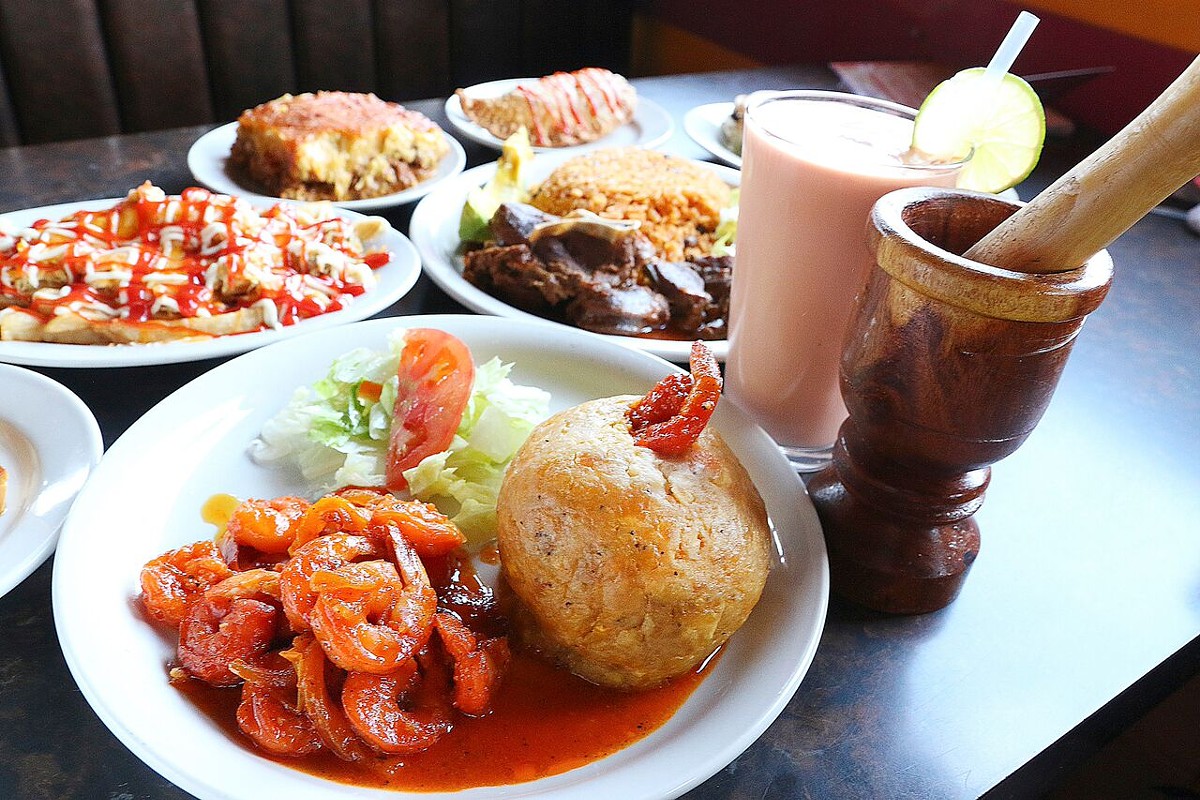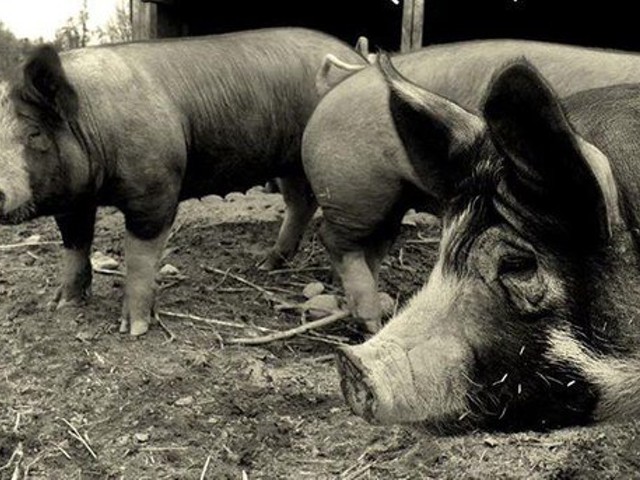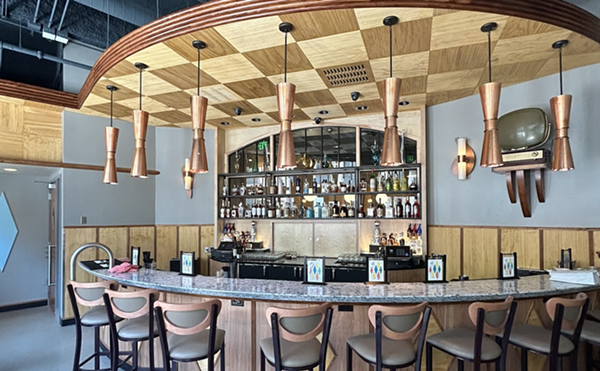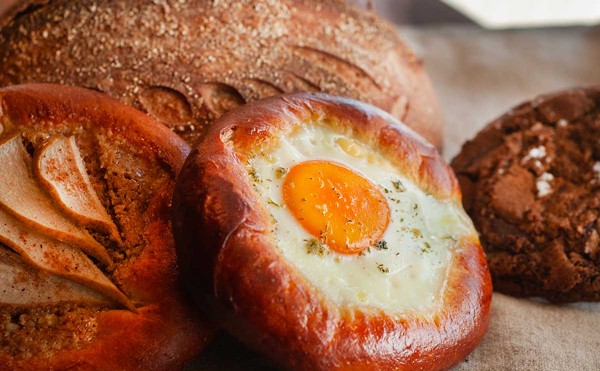Detroit is hundreds of miles away from any sizable Dominican-American population. Here, the Latino population is mostly Mexican, with some Central Americans and Puerto Ricans thrown into the mix. That means the small number of Dominicans in the area are far less likely to encounter cuisine like mom used to make it.
Step inside the three-month-old El Caribeño on West Vernor Highway though and be given a taste of the island (or at least Queens in New York). Owner Judi Hernandez is of Mexican heritage, but she learned to cook by shadowing her Dominican mother-in-law. And so far, as possibly the only Dominican restaurant in town, she's managed to attract not just her extended family and friends but Dominicans from all over metro Detroit, including some she's never met (the community is rather small after all and everyone knows everyone, she tells us).
For those familiar with Puerto Rican food, the concept at El Caribeño is similar. Heavy on the starchy plantains, daily specials of chicken, pork, and beef, a variety of street food that one may only appreciate if they're from the D.R., plus fresh juices and shakes.
Walk into the place and notice the décor is typical of many Latino American households. Walls are painted bright red and gold. Tables are accented with decorative cajetes (mortar and pestle bowls) that one might otherwise use to mash the plaintains to make mofongo. The space, a former doughnut shop, has a huge, open kitchen, where the rich smells of the cuisine waft toward the front of the house while it's being prepared by Hernandez and her small staff (which includes her mother-in-law, of course). Midday during the week, the customer base may be scarce, but on weekends, especially Sundays, the place quickly packs with large parties — mostly Dominican and some Puerto Rican families — longing for the flavors of home.
Most would argue that mofongo is Puerto Rico's national dish, but because of the two island nations' proximity to one another, the savory entree has long been a staple in many a Dominican household. Mashed with garlic and bits of chicharon, Hernandez's is fancifully formed into a ball and accompanied by a variety of meat or shrimp, as well as a cup of melted butter with garlic. We tried it with both the chuletas (pork chops) and the shrimp. The well-seasoned chops had just the right amount of tenderness to easily come off the bone with a butter knife. The shrimp came in a deep red buttery sauce that had a bit of a garlicky kick but not too much heat.
As for a daily special, the choice one recent Sunday was the chivo con moro de guandules (goat with rice and pigeon peas). The meat has a saltiness and dryness to it but it's no less tasty as you tug each morsel off the bones. The rice, another Caribbean standard, is yellow in color and quite flavorful. We were also treated to the pastelon, a sweet plantain casserole with ground beef and topped with melted cheddar cheese. The cheese and meat perfectly offset the sweetness of the ripened plantain. On a wintry Michigan day, this dish, akin to a shepherd's pie, is an unexpected source of comfort.
Hernandez says Dominicans utilize ketchup in a variety of their street food. That seems to be true too for mayonnaise. The condiments get heavy usage in a few dishes including the chimis, a burger placed in a bolillo roll that's grilled flat like a Cubano, and the yaroa, which are French fries (or plantains, if you prefer), that come topped with melted cheese, meat, and a heavy dosage of ketchup and mayo. The burger is what one would expect from a burger, no real variation aside from the bun. The yaroa is more of a guilty pleasure for folks wanting to reminisce on their days in Santiago than a delicacy. Another possibility is a number of dishes served with tostones, which are again a variation of plantains, unripe, thinly sliced, fried chips that we recommend using a lot of salt and maybe some of that garlic butter to add to the savory flavor. We had them with some generous pieces of fried chicken. We also tried an empanada, which are mostly the same as what one would expect in the folded pastry, though ours was served with an egg inside, which cooks in the dough to the consistency of hard boiled. Think of it as the ideal breakfast sandwich.
Now on to the drinks. No, booze is not served here, but that's quite OK in our book. Rather, guests are given a variety of tropical juices and shakes to choose from. We delighted in the pera pina (pineapple), the passion fruit, and the morir soñando (which tastes like a Dreamsicle in liquid form) juices. We also experienced a shake made with mamey, a fruit native to the Dominican Republic and other countries near the equator. A little too creamy for our taste, but a sweet treat nonetheless.
For dessert, we wanted to sample the habichuelas con dulce, a kind of puree of sweet cream beans, but they weren't available the few times we visited. One of the most beloved desserts in the D.R., they run out quickly at El Caribeño. Instead we opted for the flan, which was slightly sturdier than the Mexican variation and was drizzled in chocolate.
In southwest Detroit, whose Latino American community continues to expand and diversify, it doesn't surprise us that this place would be a sleeper hit so quickly. This melding of traditions certainly makes for a more interesting culinary landscape.






